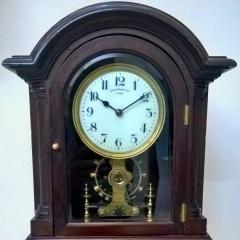-
Recently Browsing
- No registered users viewing this page.
-
Topics
-
Posts
-
By Neverenoughwatches · Posted
Hello good watch folk ,I just fancied a light hearted discussion after my head was starting to spin over Epilame 😅. Specifically I'm meaning the sale of vintage watches, say nothing past the 1980s market. The stuff we see on ebay and other similar sites and found at carboots, curio shops etc. And are we thinking its reaching a peak volume ? Younger generations clearing out passed parents and grandparents possessions. The younger folk are not as sentimental as the old fogies ( I'm now nearly at an age that i used to think was old fogie age ). When might it have started ? i often wish i discovered the hobby much much sooner when selling your grandfathers pocket watch at a boot sale for a few quid was just a way to offload some tat. And when might it slow down. Thoughts anyone ? -
By Neverenoughwatches · Posted
Yes i did eventually realise that the oil will act as a barrier, I'm sure the discussion will continue. Ive had two oleophobic coffees ( added coconut ) and in the meantime i have this just delivered to take my mind off epilame for the time being. My favourite type of dial, its a beautiful looking watch traditional English made and it runs, the ticktock is phenomenal, i can hear it across my living room . You wont believe how much it was. Thats interesting about synthetic oils , i thought the same, going from a 2 year service to 5 years is a big drop in income for service folk. I expect some did well when they embraced the use of synthetic, probably drawing in more customers than those that didn't use the new fangled substances , i bet fairly short lived though. The more frequent service makes more sense to me, not for just the service but for the regular check up inspections that might pick up impending faults. As far as epilame goes, wouldn't it be great to be able to fumigate the complete movement in a sealed jar of heated stearic acid, 🤔 now theres a thought 😅. -
Imm going to close the discussion by attaching the photo of my super-titanium after several vicissitudes finally working. Purchased as not working I replaced the battery and for a stroke of luck I found its semi-new solar panel which, having verified its operation, seems to recharge the accumulator perfectly. I had taken this watch almost by bet, with 40 euros I brought it back to life. The initial half idea was to resell it to finance another purchase, but.. it's definitely a nice item. It would need to check the impermeability but it's a pleasure to see it on the wrist 😃
-
In fact the secret is to go gently and find the way without forcing, and the movement enters without problems







Recommended Posts
Join the conversation
You can post now and register later. If you have an account, sign in now to post with your account.
Note: Your post will require moderator approval before it will be visible.